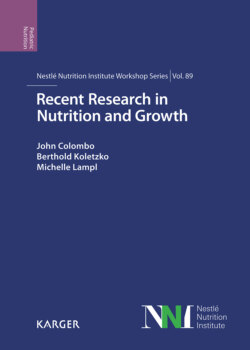Читать книгу Recent Research in Nutrition and Growth - Группа авторов - Страница 16
На сайте Литреса книга снята с продажи.
Clarifying Growth Biology: How Individuals Grow
ОглавлениеDuring the past 30 years, empirical data have identified the process of human growth as nonlinear and discontinuous [7–11]. Specifically, increase in the size of the body (e.g., length/height) [7, 9], as well as circumferential growth of the head [10, 11], is achieved through unique time-constrained growth episodes that occur only intermittently. Following the vocabulary for similar biological processes previously identified in neural tissue, this growth process is called saltatory growth and the unique growth accretions, saltations [7]. These saltations are interspersed among variable durations of stasis during which no incremental growth occurs (Fig. 1). Two features characterize saltatory growth: timing (when discrete growth occurs) and amplitude (how much size increment occurs). Individual children differ from one another in their saltation timing and amplitude patterns. They grow according to different biological clocks. This means that each individual experiences a process whereby cell level expression patterns coordinate discretely timed growth events to emerge after stasis intervals of varying duration. In this way, variabilities in frequency and amplitude of growth saltations permit children to follow different specific paths to similar sizes. It is also the way by which individuals attain different sizes by similar fundamental mechanisms. A pattern of saltation and stasis characterizes human growth across the developmental period from fetal life to the achievement of adult stature.
Saltation and stasis are distinctly different biological processes from the growth chart-based representation of slow and steady daily growth and as such raise fundamental questions for nutritional science. In lieu of the present model of constant growth energetics, growth in irregular bursts suggests there are times of greater resource utilization amidst a background maintenance state.
